South America: Buenos Aires, Argentina Cityscapes
Mar 12, 2022 16:05:10 #
We left Bariloche and beautifully scenic northern Patagonia to continue our journey arriving in Buenos Aires late in the afternoon. The narrative below is a highly edited version of the Wikipedia pages on Buenos Aires:
https://en.wikipedia.org/wiki/Buenos_Aires
Buenos Aires (Spanish pronunciation: [ˈbwenos ˈajɾes] officially the Autonomous City of Buenos Aires (Spanish: Ciudad Autónoma de Buenos Aires), is the capital and largest city of Argentina. The city is located on the western shore of the Río de la Plata, on South America's southeastern coast. "Buenos Aires" can be translated as "fair winds" or "good airs", but the former was the meaning intended by the founders in the 16th century, by the use of the original name "Real de Nuestra Señora Santa María del Buen Ayre", named after the Madonna of Bonaria in Sardinia, Italy.
The city of Buenos Aires is neither part of Buenos Aires Province nor the Province's capital; rather, it is an autonomous district. In 1880, after decades of political infighting, Buenos Aires was federalized and removed from Buenos Aires Province. The city limits were enlarged to include the towns of Belgrano and Flores; both are now neighborhoods of the city. The 1994 constitutional amendment granted the city autonomy, hence its formal name of Autonomous City of Buenos Aires. Its citizens first elected a Chief of Government in 1996; previously, the Mayor was directly appointed by the President of Argentina.
The Greater Buenos Aires conurbation, which also includes several Buenos Aires Province districts, constitutes the fourth-most populous metropolitan area in the Americas, with a population of around 15.6 million. It is also the second largest city south of the Tropic of Capricorn.
Buenos Aires' quality of life was ranked 91st in the world in 2018, being one of the best in Latin America. In 2012, it was the most visited city in South America, and the second-most visited city of Latin America.
It is known for its preserved eclectic European architecture and rich cultural life. Buenos Aires held the 1st FIBA World Championship in 1950 and 11th FIBA World Championship in 1990, the 1st Pan American Games in 1951, was the site of two venues in the 1978 FIFA World Cup and one in the 1982 FIVB Men's World Championship. Most recently, Buenos Aires had a venue in the 2001 FIFA World Youth Championship and in the 2002 FIVB Volleyball Men's World Championship, hosted the 125th IOC Session in 2013, the 2018 Summer Youth Olympics and the 2018 G20 summit.
Buenos Aires is a multicultural city that is home to multiple ethnic and religious groups, contributing to its culture as well as to the dialect spoken in the city and in some other parts of the country. This is because since the 19th century, the city, and the country in general, has been a major recipient of millions of immigrants from all over the world, making it a melting pot where several ethnic groups live together. Thus, Buenos Aires is considered one of the most diverse cities of the Americas.
In the first foundation of Buenos Aires, Spanish sailors arrived thankfully in the Río de la Plata by the blessings of the "Santa Maria de los Buenos Aires", the "Holy Virgin Mary of the Good Winds" who was said to have given them the good winds to reach the coast of what is today the modern city of Buenos Aires. Pedro de Mendoza called the city "Holy Mary of the Fair Winds", a name suggested by the chaplain of Mendoza's expedition – a devotee of the Virgin of Buen Ayre – after the Madonna of Bonaria from Sardinia (which is still to this day the patroness of the Mediterranean island. Mendoza's settlement soon came under attack by indigenous people, and was abandoned in 1541.
In 1516, navigator and explorer Juan Díaz de Solís, navigating in the name of Spain, was the first European to reach the Río de la Plata. His expedition was cut short when he was killed during an attack by the native Charrúa tribe in what is now Uruguay.
The city of Buenos Aires was first established as Ciudad de Nuestra Señora Santa María del Buen Ayre (literally "City of Our Lady Saint Mary of the Fair Winds") after Our Lady of Bonaria (Patroness Saint of Sardinia) on 2 February 1536 by a Spanish expedition led by Pedro de Mendoza. The settlement founded by Mendoza was located in what is today the San Telmo district of Buenos Aires, south of the city center.
Formal independence from Spain was declared in 1816, at the Congress of Tucumán. Buenos Aires managed to endure the whole Spanish American wars of independence without falling again under royalist rule.
Historically, Buenos Aires has been Argentina's main venue of liberal, free-trading, and foreign ideas. In contrast, many of the provinces, especially those to the city's northwest, advocated a more nationalistic and Catholic approach to political and social issues. In fact, much of the internal tension in Argentina's history, starting with the centralist-federalist conflicts of the 19th century, can be traced back to these contrasting views. In the months immediately following said "May Revolution", Buenos Aires sent a number of military envoys to the provinces with the intention of obtaining their approval. Instead, the enterprise fueled tensions between the capital and the provinces; many of these missions ended in violent clashes.
In the 19th century the city was blockaded twice by naval forces: by the French from 1838 to 1840, and later by an Anglo-French expedition from 1845 to 1848. Both blockades failed to bring the Argentine government to the negotiating table, and the foreign powers eventually desisted from their demands.
Buenos Aires also attracted migrants from Argentina's provinces and neighboring countries. Shanty towns (villas miseria) started growing around the city's industrial areas during the 1930s, leading to pervasive social problems and social contrasts with the largely upwardly-mobile Buenos Aires population. These laborers became the political base of Peronism, which emerged in Buenos Aires during the pivotal demonstration of 17 October 1945, at the Plaza de Mayo. Industrial workers of the Greater Buenos Aires industrial belt have been Peronism's main support base ever since, and Plaza de Mayo became the site for demonstrations and many of the country's political events; on 16 June 1955, however, a splinter faction of the Navy bombed the Plaza de Mayo area, killing 364 civilians (see Bombing of Plaza de Mayo). This was the only time the city was attacked from the air, and the event was followed by a military uprising which deposed President Perón, three months later (see Revolución Libertadora).
In the 1970s the city suffered from the fighting between left-wing revolutionary movements (Montoneros, ERP and F.A.R.) and the right-wing paramilitary group Triple A, supported by Isabel Perón, who became president of Argentina in 1974 after Juan Perón's death.
On 17 March 1992, a bomb exploded in the Israeli Embassy, killing 29 and injuring 242. Another explosion, on 18 July 1994, destroyed a building housing several Jewish organizations, killing 85 and injuring many more, these incidents marked the beginning of Middle Eastern terrorism to South America. Following a 1993 agreement, the Argentine Constitution was amended to give Buenos Aires autonomy and rescinding, among other things, the president's right to appoint the city's mayor (as had been the case since 1880). On 30 June 1996, voters in Buenos Aires chose their first elected mayor (Jefe de Gobierno).
According to the World Travel & Tourism Council, tourism has been growing in the Argentine capital since 2002. In a survey by the travel and tourism publication Travel + Leisure Magazine in 2008, visitors voted Buenos Aires the second most desirable city to visit after Florence, Italy. In 2008, an estimated 2.5 million visitors visited the city. Buenos Aires is an international hub of highly active and diverse nightlife with bars, dance bars and nightclubs staying open well past midnight.
Visitors have many options for travel such as going to a tango show, an estancia in the Province of Buenos Aires, or enjoying the traditional asado. New tourist circuits have recently evolved, devoted to Argentines such as Carlos Gardel, Eva Perón or Jorge Luis Borges. Before 2011, due to the Argentine peso's favorable exchange rate, its shopping centers such as Alto Palermo, Paseo Alcorta, Patio Bullrich, Abasto de Buenos Aires and Galerías Pacífico were frequently visited by tourists. Nowadays, the exchange rate has hampered tourism and shopping in particular. In fact, notable consumer brands such as Burberry and Louis Vuitton have abandoned the country due to the exchange rate and import restrictions. The city also plays host to musical festivals, some of the largest of which are Quilmes Rock, Creamfields BA, Ultra Music Festival (Buenos Aires), and the Buenos Aires Jazz Festival.
I hope you enjoy these images. All, except #2 were taken through the tour bus windows.
Mark
https://en.wikipedia.org/wiki/Buenos_Aires
Buenos Aires (Spanish pronunciation: [ˈbwenos ˈajɾes] officially the Autonomous City of Buenos Aires (Spanish: Ciudad Autónoma de Buenos Aires), is the capital and largest city of Argentina. The city is located on the western shore of the Río de la Plata, on South America's southeastern coast. "Buenos Aires" can be translated as "fair winds" or "good airs", but the former was the meaning intended by the founders in the 16th century, by the use of the original name "Real de Nuestra Señora Santa María del Buen Ayre", named after the Madonna of Bonaria in Sardinia, Italy.
The city of Buenos Aires is neither part of Buenos Aires Province nor the Province's capital; rather, it is an autonomous district. In 1880, after decades of political infighting, Buenos Aires was federalized and removed from Buenos Aires Province. The city limits were enlarged to include the towns of Belgrano and Flores; both are now neighborhoods of the city. The 1994 constitutional amendment granted the city autonomy, hence its formal name of Autonomous City of Buenos Aires. Its citizens first elected a Chief of Government in 1996; previously, the Mayor was directly appointed by the President of Argentina.
The Greater Buenos Aires conurbation, which also includes several Buenos Aires Province districts, constitutes the fourth-most populous metropolitan area in the Americas, with a population of around 15.6 million. It is also the second largest city south of the Tropic of Capricorn.
Buenos Aires' quality of life was ranked 91st in the world in 2018, being one of the best in Latin America. In 2012, it was the most visited city in South America, and the second-most visited city of Latin America.
It is known for its preserved eclectic European architecture and rich cultural life. Buenos Aires held the 1st FIBA World Championship in 1950 and 11th FIBA World Championship in 1990, the 1st Pan American Games in 1951, was the site of two venues in the 1978 FIFA World Cup and one in the 1982 FIVB Men's World Championship. Most recently, Buenos Aires had a venue in the 2001 FIFA World Youth Championship and in the 2002 FIVB Volleyball Men's World Championship, hosted the 125th IOC Session in 2013, the 2018 Summer Youth Olympics and the 2018 G20 summit.
Buenos Aires is a multicultural city that is home to multiple ethnic and religious groups, contributing to its culture as well as to the dialect spoken in the city and in some other parts of the country. This is because since the 19th century, the city, and the country in general, has been a major recipient of millions of immigrants from all over the world, making it a melting pot where several ethnic groups live together. Thus, Buenos Aires is considered one of the most diverse cities of the Americas.
In the first foundation of Buenos Aires, Spanish sailors arrived thankfully in the Río de la Plata by the blessings of the "Santa Maria de los Buenos Aires", the "Holy Virgin Mary of the Good Winds" who was said to have given them the good winds to reach the coast of what is today the modern city of Buenos Aires. Pedro de Mendoza called the city "Holy Mary of the Fair Winds", a name suggested by the chaplain of Mendoza's expedition – a devotee of the Virgin of Buen Ayre – after the Madonna of Bonaria from Sardinia (which is still to this day the patroness of the Mediterranean island. Mendoza's settlement soon came under attack by indigenous people, and was abandoned in 1541.
In 1516, navigator and explorer Juan Díaz de Solís, navigating in the name of Spain, was the first European to reach the Río de la Plata. His expedition was cut short when he was killed during an attack by the native Charrúa tribe in what is now Uruguay.
The city of Buenos Aires was first established as Ciudad de Nuestra Señora Santa María del Buen Ayre (literally "City of Our Lady Saint Mary of the Fair Winds") after Our Lady of Bonaria (Patroness Saint of Sardinia) on 2 February 1536 by a Spanish expedition led by Pedro de Mendoza. The settlement founded by Mendoza was located in what is today the San Telmo district of Buenos Aires, south of the city center.
Formal independence from Spain was declared in 1816, at the Congress of Tucumán. Buenos Aires managed to endure the whole Spanish American wars of independence without falling again under royalist rule.
Historically, Buenos Aires has been Argentina's main venue of liberal, free-trading, and foreign ideas. In contrast, many of the provinces, especially those to the city's northwest, advocated a more nationalistic and Catholic approach to political and social issues. In fact, much of the internal tension in Argentina's history, starting with the centralist-federalist conflicts of the 19th century, can be traced back to these contrasting views. In the months immediately following said "May Revolution", Buenos Aires sent a number of military envoys to the provinces with the intention of obtaining their approval. Instead, the enterprise fueled tensions between the capital and the provinces; many of these missions ended in violent clashes.
In the 19th century the city was blockaded twice by naval forces: by the French from 1838 to 1840, and later by an Anglo-French expedition from 1845 to 1848. Both blockades failed to bring the Argentine government to the negotiating table, and the foreign powers eventually desisted from their demands.
Buenos Aires also attracted migrants from Argentina's provinces and neighboring countries. Shanty towns (villas miseria) started growing around the city's industrial areas during the 1930s, leading to pervasive social problems and social contrasts with the largely upwardly-mobile Buenos Aires population. These laborers became the political base of Peronism, which emerged in Buenos Aires during the pivotal demonstration of 17 October 1945, at the Plaza de Mayo. Industrial workers of the Greater Buenos Aires industrial belt have been Peronism's main support base ever since, and Plaza de Mayo became the site for demonstrations and many of the country's political events; on 16 June 1955, however, a splinter faction of the Navy bombed the Plaza de Mayo area, killing 364 civilians (see Bombing of Plaza de Mayo). This was the only time the city was attacked from the air, and the event was followed by a military uprising which deposed President Perón, three months later (see Revolución Libertadora).
In the 1970s the city suffered from the fighting between left-wing revolutionary movements (Montoneros, ERP and F.A.R.) and the right-wing paramilitary group Triple A, supported by Isabel Perón, who became president of Argentina in 1974 after Juan Perón's death.
On 17 March 1992, a bomb exploded in the Israeli Embassy, killing 29 and injuring 242. Another explosion, on 18 July 1994, destroyed a building housing several Jewish organizations, killing 85 and injuring many more, these incidents marked the beginning of Middle Eastern terrorism to South America. Following a 1993 agreement, the Argentine Constitution was amended to give Buenos Aires autonomy and rescinding, among other things, the president's right to appoint the city's mayor (as had been the case since 1880). On 30 June 1996, voters in Buenos Aires chose their first elected mayor (Jefe de Gobierno).
According to the World Travel & Tourism Council, tourism has been growing in the Argentine capital since 2002. In a survey by the travel and tourism publication Travel + Leisure Magazine in 2008, visitors voted Buenos Aires the second most desirable city to visit after Florence, Italy. In 2008, an estimated 2.5 million visitors visited the city. Buenos Aires is an international hub of highly active and diverse nightlife with bars, dance bars and nightclubs staying open well past midnight.
Visitors have many options for travel such as going to a tango show, an estancia in the Province of Buenos Aires, or enjoying the traditional asado. New tourist circuits have recently evolved, devoted to Argentines such as Carlos Gardel, Eva Perón or Jorge Luis Borges. Before 2011, due to the Argentine peso's favorable exchange rate, its shopping centers such as Alto Palermo, Paseo Alcorta, Patio Bullrich, Abasto de Buenos Aires and Galerías Pacífico were frequently visited by tourists. Nowadays, the exchange rate has hampered tourism and shopping in particular. In fact, notable consumer brands such as Burberry and Louis Vuitton have abandoned the country due to the exchange rate and import restrictions. The city also plays host to musical festivals, some of the largest of which are Quilmes Rock, Creamfields BA, Ultra Music Festival (Buenos Aires), and the Buenos Aires Jazz Festival.
I hope you enjoy these images. All, except #2 were taken through the tour bus windows.
Mark
Through the tour bus window on our way from the airport
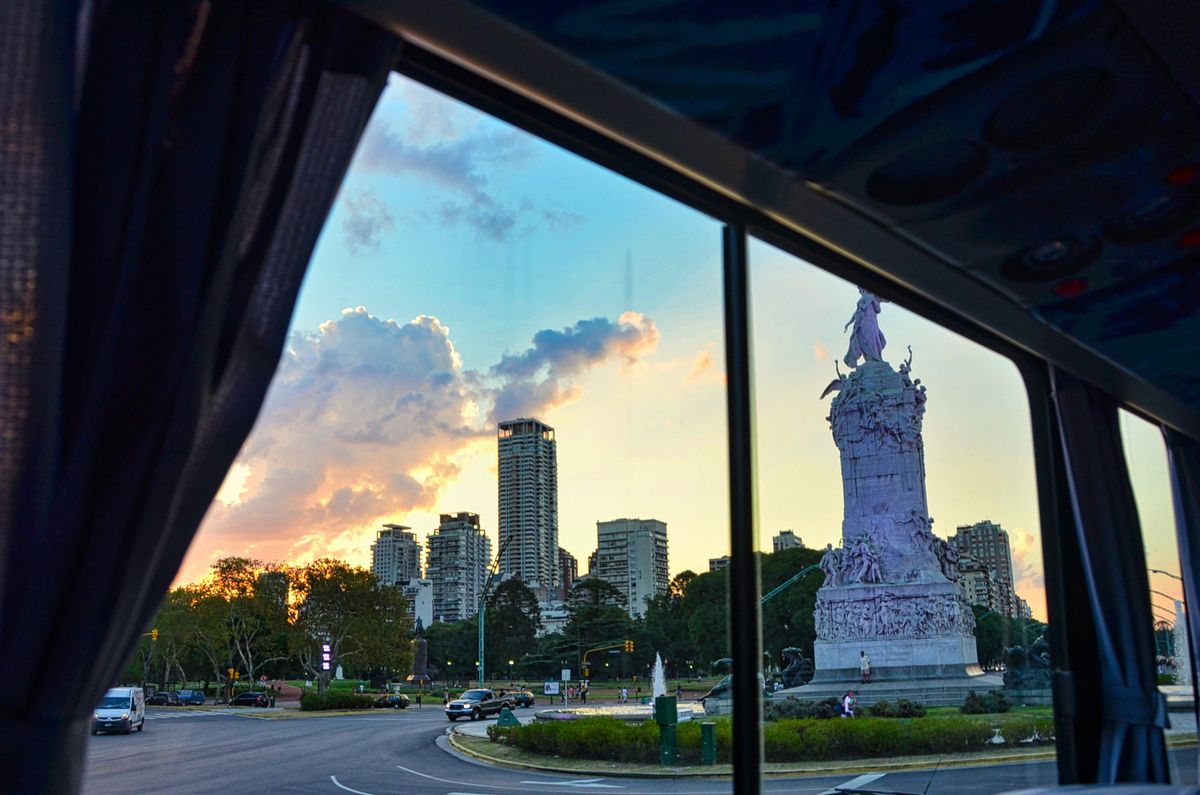
(Download)
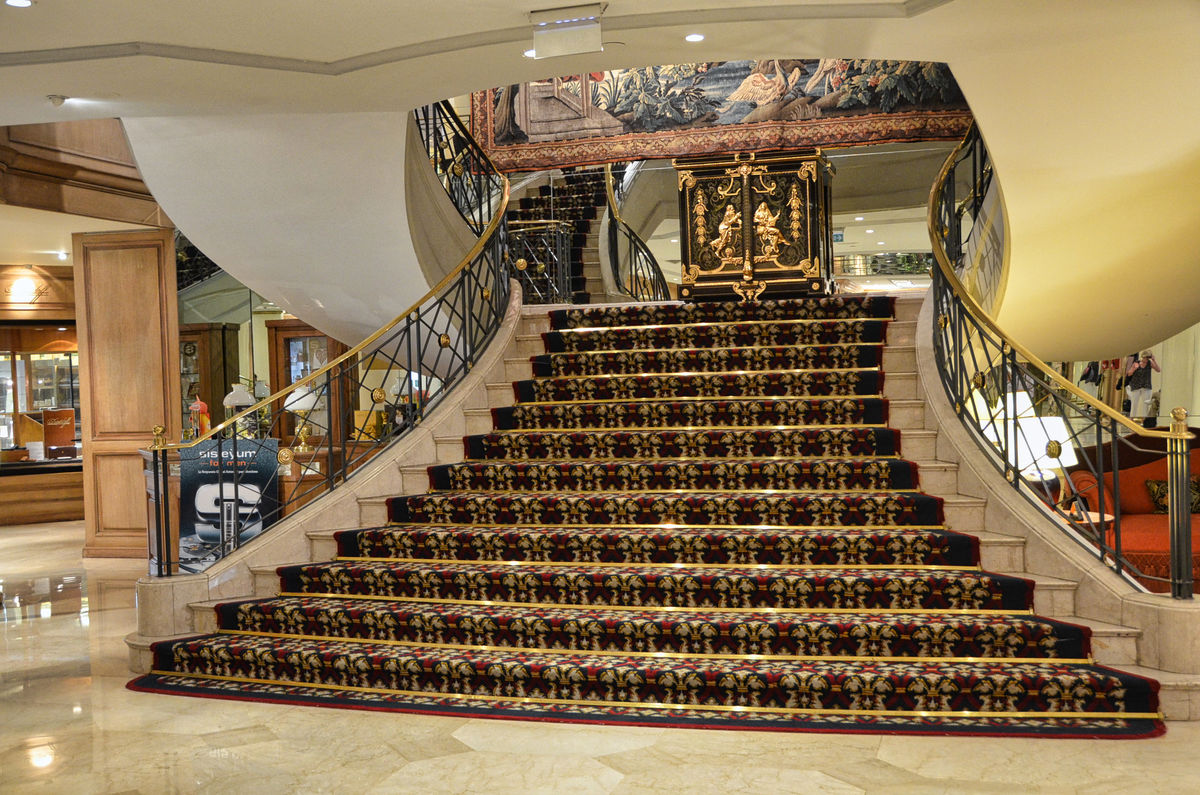
(Download)

(Download)
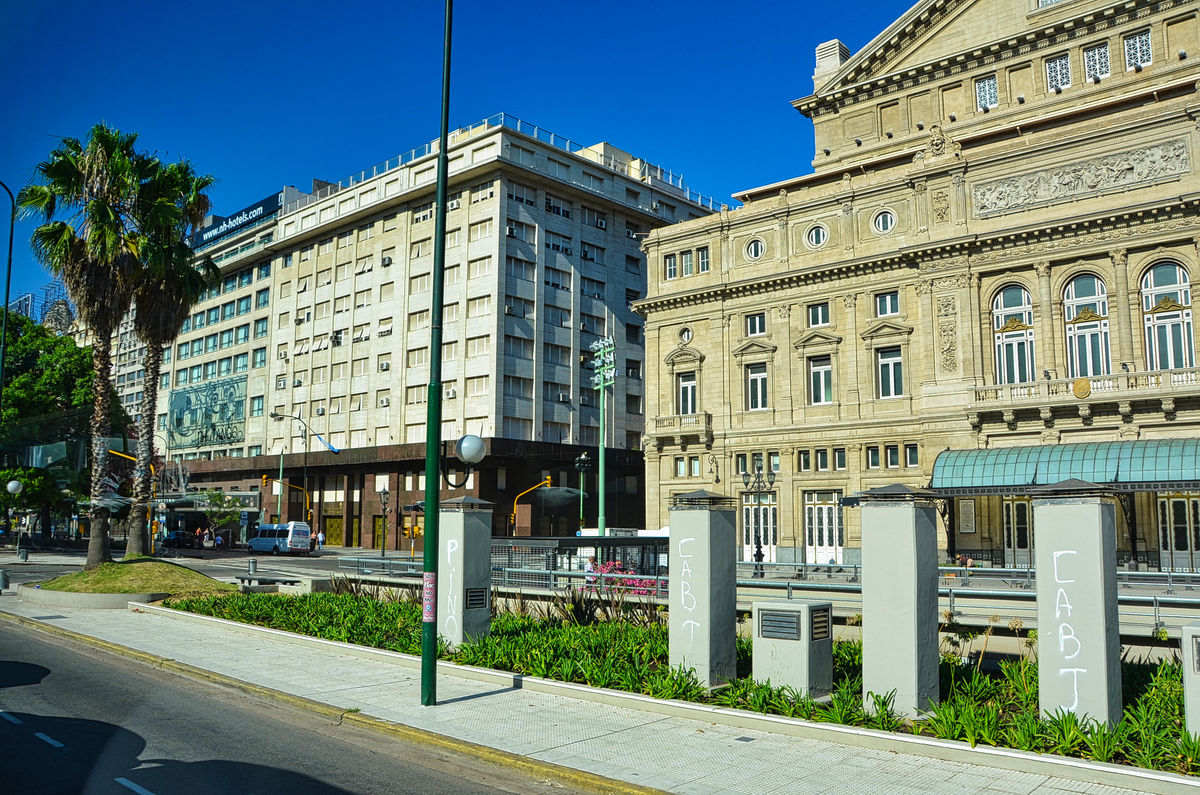
(Download)

(Download)

(Download)

(Download)
Image of "Evita" Peron
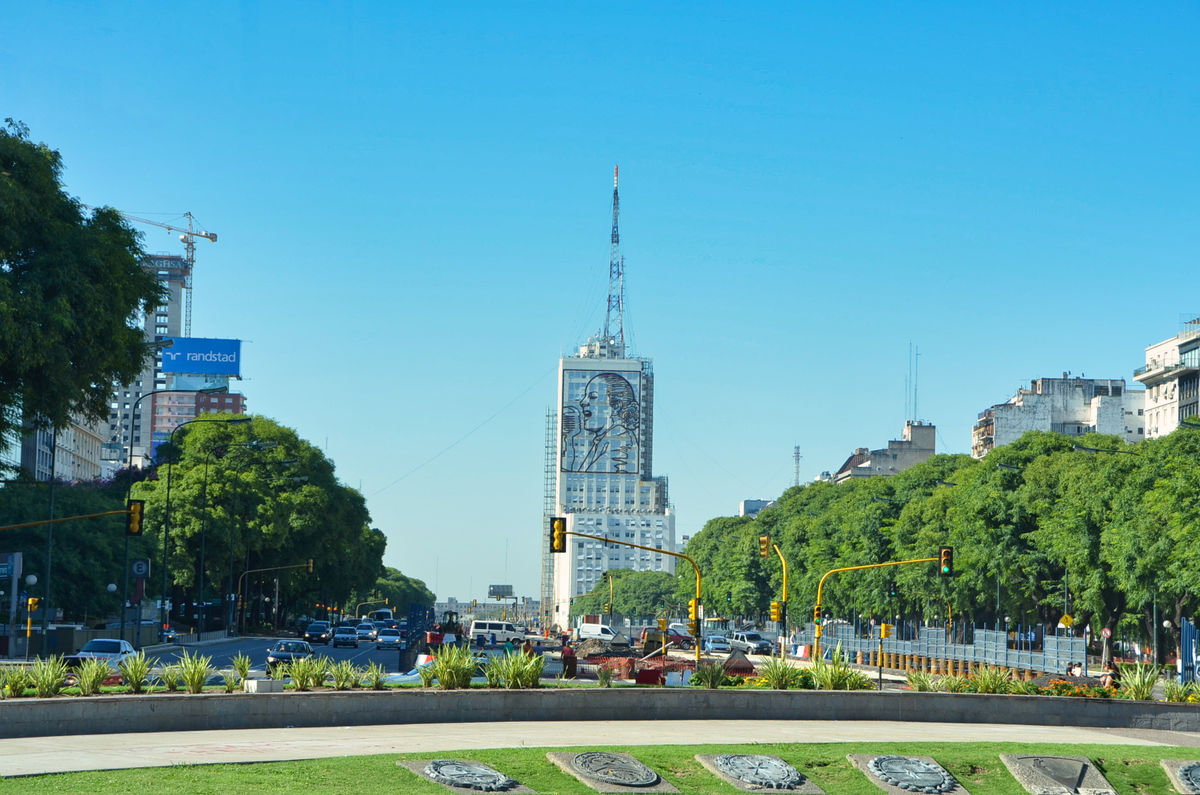
(Download)

(Download)
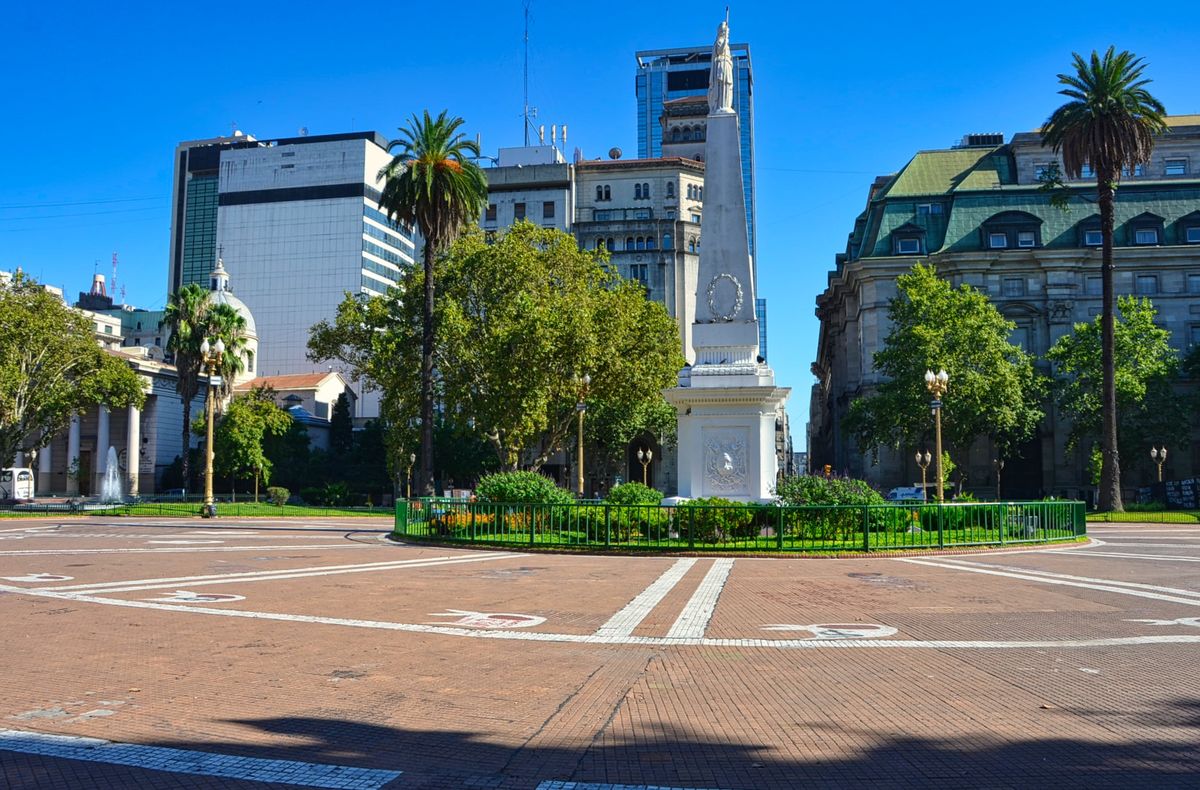
(Download)
Mar 12, 2022 16:07:43 #
Mar 12, 2022 16:16:32 #
Mar 12, 2022 16:59:13 #
Nice set, darn good shots out of a bus!
Fantastic looking city, with beautiful summer weather it would seem!
Rob
Fantastic looking city, with beautiful summer weather it would seem!
Rob
Mar 12, 2022 18:47:25 #
Umnak wrote:
Nice set, darn good shots out of a bus!
Fantastic looking city, with beautiful summer weather it would seem!
Rob
Fantastic looking city, with beautiful summer weather it would seem!
Rob
Thanks very much Rob. It really is a beautiful city and the weather was perfect!
Mar 12, 2022 20:43:14 #
Mar 12, 2022 21:24:09 #
Mar 13, 2022 06:59:17 #
Beautiful set, Mark. I know how difficult it is to get great photos from a window of a moving bus but you have shown expertise in the bus window genre. Especially love the framing of the first photo through the bus window, wish the top of the statue had made it in; nonetheless, it is beautiful. Thanks for sharing the Buenos Aires story.
Mar 13, 2022 07:01:50 #
Mar 13, 2022 07:13:29 #
Mar 13, 2022 07:28:49 #
Mar 13, 2022 08:23:08 #
Mar 13, 2022 08:28:20 #
Mar 13, 2022 09:10:37 #
Tdearing
Loc: Rockport, TX
Terrific photos, nice of all the people to get out of your way. Seems a bit eerie for such a large city to appear so empty. Great job.
Mar 13, 2022 09:23:00 #
If you want to reply, then register here. Registration is free and your account is created instantly, so you can post right away.












